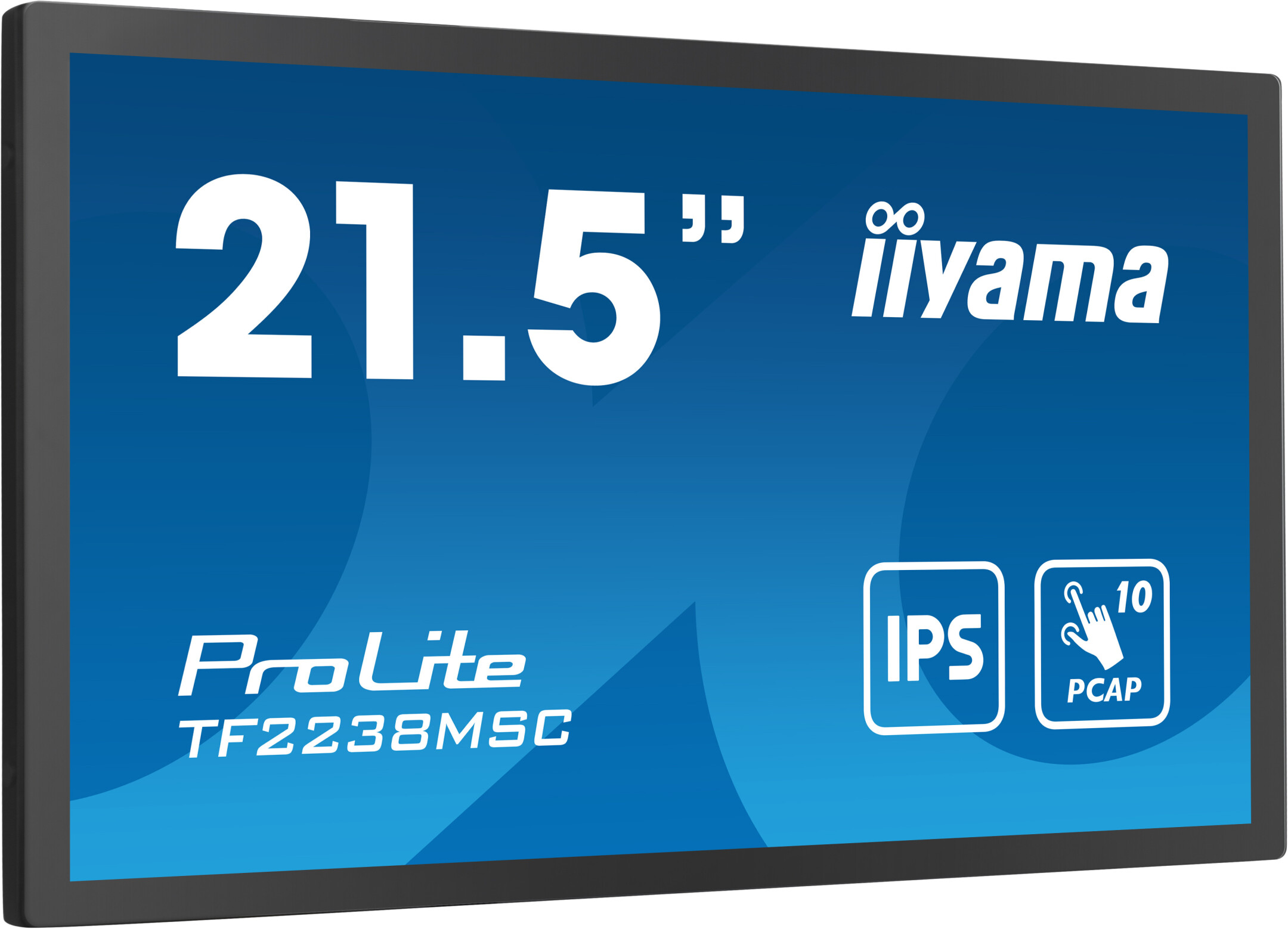



















































£436.69*
- Resolution 1920 x 1080 Full HD
- Diagonal 22"
- Panel type IPS
- Refresh Rate 83Hz



Product information
PROLITE TF2238MSC-B1
Thanks to IPS panel technology, the Full HD resolution (1920x1080) open frame monitor offers exceptional colour reproduction and wide viewing angles. Equipped with Optical Bonded projective capacitive 10-point touch technology, the ProLite TF2238MSC-B1 offers seamless and precise touch response and fewer light reflections, resulting in better and high-contrast image reproduction. In addition, the display is further protected against moisture and potential mould growth. A robust metal housing and elegant 7H edge-to-edge glass with anti-fingerprint coating make the monitor particularly suitable for integration in demanding environments. In addition, the monitor complies with the IPX1 protection class and is thus waterproof for a certain period of time even in the case of vertically falling dripping water. Furthermore, the monitor is equipped with two 2W speakers, HDMI and DisplayPort inputs for multiple connection options. The ProLite TF2238MSC-B1 is the ideal solution for kiosk systems, digital signage installations, retail and interactive presentations.
OPTIC BONDED PCAP TOUCH TECHNOLOGY
Optically bonded projective capacitive (PCAP) touch technology reduces the air gap between the touch layer and the display, making touch response more accurate. It also improves the visual quality of image reproduction by reducing reflections and glare. In addition, the display is protected from dust and possible moisture build-up.
IPS TECHNOLOGY
IPS displays are best known for wide viewing angles and natural, highly accurate colours. They are particularly suitable for colour-critical applications.
OPEN FRAME (FRAMELESS MOUNTING)
Open frame monitors make them the ideal solution for integrators and for kiosk system manufacturers.
Scratch resistance
Scratch resistance is essential for touch solutions used in public places and schools. This is achieved by a glass pane on the screen. It guarantees a long lifetime of the touch function and even more importantly, the touch function remains unaffected even if the glass is scratched.
SPEAKERS
Equipped with two high-quality stereo speakers.
Technical data
| Name | iiyama TF2238MSC-B1 22" IPS Monitor, 1920 x 1080 Full HD, 83Hz, 5ms |
|---|---|
| Article number | 1000029051 |
| GTIN/EAN | 4948570121618 |
| Manufacturer SKU | TF2238MSC-B1 |
| EPREL ID | 1518603 |
| Model name | TF2238MSC-B1 |
| Brand | iiyama |
| Product Type | Monitor |
| Product Series | iiyama TF Series |
| Technology | LCD |
| Panel type | IPS |
| backlight | Direct-LED |
| Resolution | 1920 x 1080 Full HD |
| Diagonal | 22" |
| Aspect Ratio | 16:9 |
| Viewing angle - Horizontal | 178° |
| Viewing angle - Vertical | 178° |
| Contrast Ratio | 1,000 :1 |
| Max. Brightness | 600 cd/m² |
| Response time | 5ms |
| Refresh Rate | 83Hz |
| Support - VESA | 100 x 100 |
| Inputs | 1x Displayport , 1x HDMI , 2x USB-A |
| Outputs | 1x 3,5mm Jack |
| Features | Integrated speaker , Touch screen |
| Product width | 51.25 cm |
| Product height | 30 cm |
| Product depth | 4.7 cm |
| Weight | 5.1 kg |
| Colour | Black |
| EEK Spectrum | A to G |
| Energy efficency class | D |
| Delivery contents | HDMI Cable , Power cable , USB cable |
| Condition | New |
| Warranty | 24 Month |
| Warranty type | Bringin service Service and support information |
Downloads
Product safety
| Person responsible for the EU |
|---|
| iiyama International Corporate |
| Wijkermeerstraat 8 |
| 2131 HA Hoofddorp |
| Netherlands |
| info.de@iiyama.com |



